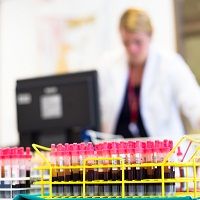STD Treatment Often Falls in Dermatologists' Hands
Sexually transmitted diseases (STDs) often have their own set of stigmas, particularly since they affect more than just the genitals; visible signs can also surface on patients’ skin.

Sexually transmitted diseases (STDs) often have their own set of stigmas, particularly since they affect more than just the genitals; visible signs can also surface on patients’ skin.
According to recent CDC reports, the US holds the highest rate of STDs — approximately 20 million cases annually.
As a majority of these infections show up on the skin, dermatologists are just as involved in STD treatment as gynecologists, urologists, and infectious disease specialists, explained Sonoa Au, MD, Advanced Dermatology, PC.
Of the STDs treated by dermatologists, the most common are:
- Herpes simplex virus (HSV): Producing painful sores in the genital region or on the mouth. “The issue with herpes is that the virus stays in the body forever and can be infectious even when the skin looks normal and people are taking medication to prevent outbreaks,” said Au.
- Genital warts: Small, skin-colored bumps triggered by the HPV often appear weeks or months after the infection. According to Au, “Genital warts don’t typically hurt or itch, but they can be embarrassing and unsightly. Moreover, certain strains of HPV can cause cervical cancer.”
- Syphilis: Usually appearing three — six weeks following six, syphilis “can also show up as large, open sores on your lips and mouth. Some sores may also appear on the tongue or inside the mouth, and untreated syphilis can even cause a reddish rash to appear all over the body.”
- Chlamydia: One of the more common STDs, dramatic symptoms of chlamydia include: pain during urination, vaginal discharge, or genital inflammation. However, chlamydia can also affect an extremely visible area — the eye, causing a form of pink eye and potentially blindness. “This infection can occur from touching the eye after touching the genitals or genital secretions of someone infection with chlamydia,” said Au.
Taking it a step further, dermatologists are fully capable of both diagnosing and treating STDs. The two main treatment methods include antibiotics or antiviral drugs.
Often, a single dose of antibiotics is enough to fully eradicate many parasite- or bacteria-induced STDs (syphilis and chlamydia).
Additionally, although antiviral drugs can’t cure sexually transmitted viruses like herpes or HIV, these prescription drugs can significantly impact the course of disease — early treatment is key.
Au commented in a news release, “Dermatologists are extremely well-versed in STD care and we have particular expertise in its skin effects, which can be pervasive. Consulting with a dermatologist should be an action of first resort if you’re dealing with an STD.”